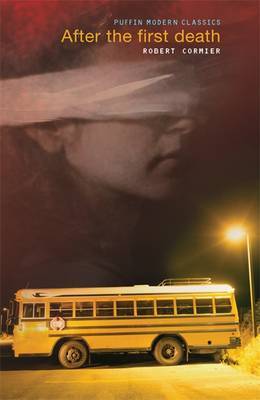
After the First Death
Robert Cormier
London, Puffin, 2006, 275p
After the First Death begins with a narration from Ben, a young boy haunted by an incident we do not yet know much about, except that it has left him with a scar from a bullet wound and it has shattered the already fragile relationship he has with his father. With time, his monologue is augmented with the voices of two others involved in this fateful day - Kate, a girl held hostage on a bus full of children, willing herself to be brave enough to act; and Miro, following the commands of a man he reveres, recounting how it came to be that he
The novel is emotive and tense - all of the action unfolds over a relatively short space of time, as we are drip fed details, unraveling the truth. The story focuses upon the thoughts and feelings of these three characters. Kate and Miro are battling to stay alive in the moment of the action, and Ben, place between the military and the terrorists, tells of the aftermath of the kidnapping.
Particularly interesting is Miro's story. He seems strangely innocent, even though he is involved with the 'terrorist' group of the story. Even Kate feels pity for him, as he tells his story, though her feelings are conflicted with the anger she feels towards her captor.
It wasn't until I was halfway through the book that I realised this novel had been first published in 1979. This new knowledge added an incredibly dark slant to my reading of it - the realisation that a book written twenty five years ago could still feel so timely and current. Although the development of the character's internal identities are detailed and vivid, their physical appearances are left unspecified. As such, Miro and Artkin, with their made up names, are not linked to a specific race or nation or conflict. The fictional events of this story could be seen as a telling of many real situations, and a reader today, in the context of the current political climate, can relate as easily as a reader from twenty five years ago.
It is terrifying that this book felt so plausible, and has felt this real for so long. But Cormier's exploration of the three sides to this story packs a powerful punch, illustrating how victimization and innocence subjective.
No comments:
Post a Comment